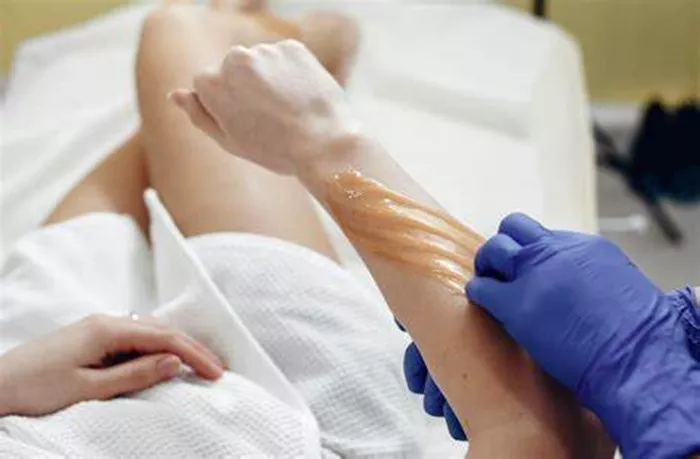Caring for your skin after waxing is crucial for maintaining its health and preventing irritation or complications. Waxing, while an effective hair removal method, can leave the skin sensitive and vulnerable. This article provides a comprehensive guide on how to care for your skin post-waxing, ensuring a smooth recovery and optimal skin health.
Waxing and Its Effects on the Skin
Waxing involves applying a warm wax to the skin, which adheres to the hair and is then pulled away, removing the hair from the root. This process can strip away the outermost layer of skin, leading to sensitivity, redness, and potential irritation. Understanding the effects of waxing on your skin is the first step in effective aftercare.
Immediate Post-Wax Care
1. Cool the Skin
After waxing, your skin may feel warm and tender. Applying a cold compress can help soothe the area. Use a clean cloth soaked in cold water or an ice pack wrapped in a towel. Apply it for 10-15 minutes to reduce inflammation and discomfort.
2. Avoid Touching the Area
It’s tempting to touch your newly waxed skin to feel its smoothness, but this can introduce bacteria and lead to infections. Keep your hands away from the waxed area to minimize the risk of irritation.
3. Stay Away from Heat
For at least 24 hours post-wax, avoid hot baths, saunas, and intense workouts. Heat can aggravate the skin, leading to increased redness and discomfort. Opt for lukewarm showers instead.
4. Skip Swimming
Avoid swimming in pools, hot tubs, or the ocean for at least 48 hours. Chlorine and salt can irritate sensitive skin, and exposure to water can increase the risk of infection in open pores.
5. Use Gentle Products
After waxing, your skin is more susceptible to irritation. Use gentle, fragrance-free products for cleansing and moisturizing. Avoid products with harsh chemicals, alcohol, or strong fragrances that can exacerbate sensitivity.
See Also: When to Start Using Anti-Aging Skin Care Products?
Long-Term Care for Waxed Skin
1. Moisturize Regularly
Keeping your skin hydrated is essential after waxing. Use a gentle moisturizer that is free from fragrances and dyes. Look for products containing soothing ingredients like aloe vera, chamomile, or hyaluronic acid.
2. Exfoliate Wisely
Exfoliation is key to preventing ingrown hairs, but it should be approached with caution after waxing. Wait at least 48 hours before gently exfoliating the area. Use a mild exfoliant or a soft washcloth to remove dead skin cells without irritating the skin.
3. Protect Against Sun Exposure
Waxed skin is particularly sensitive to sunlight. Avoid direct sun exposure for at least 48 hours, and apply a broad-spectrum sunscreen with a high SPF if you need to go outside. This will prevent hyperpigmentation and sunburn.
4. Maintain a Regular Waxing Schedule
Consistency is important in waxing. Regular appointments can help your hair grow back finer and sparser over time, making the process less painful and the skin less reactive.
What to Avoid After Waxing
1. No Tight Clothing
After waxing, wear loose-fitting, breathable clothing to prevent friction and irritation on the waxed areas. Tight clothing can trap heat and moisture, leading to discomfort and potential breakouts.
2. Avoid Hot Showers and Baths
As mentioned, avoid hot water for at least 24 hours. Instead, opt for cool or lukewarm showers to prevent further irritation.
3. Skip Heavy Exercise
Avoid intense workouts for 24 hours post-waxing. Sweat can irritate the skin and lead to breakouts, especially in sensitive areas.
4. No Harsh Treatments
Refrain from using retinoids, chemical peels, or other harsh skincare treatments for at least a week after waxing. Your skin needs time to recover from the trauma of hair removal.
Signs of Complications
While proper aftercare can minimize complications, it’s important to be aware of potential issues:
Redness and Swelling: Some redness is normal, but if it persists or worsens, it may indicate an allergic reaction or infection.
Ingrown Hairs: If you notice bumps or painful spots, you may have ingrown hairs. Regular exfoliation and moisturizing can help prevent this.
Pus or Discharge: If the waxed area develops pus or a foul smell, it could be an infection. Seek medical advice if this occurs.
Conclusion
Caring for your skin after waxing is essential for maintaining its health and appearance. By following these guidelines, you can ensure a smooth recovery and enjoy the benefits of waxing without the drawbacks. Always listen to your body and adjust your aftercare routine as needed to suit your skin’s specific needs. With the right care, you can keep your skin looking and feeling its best after every waxing session.
[inline_related_posts title=”You Might Be Interested In” title_align=”left” style=”list” number=”6″ align=”none” ids=”11521,11508,11267″ by=”categories” orderby=”rand” order=”DESC” hide_thumb=”no” thumb_right=”no” views=”no” date=”yes” grid_columns=”2″ post_type=”” tax=””]

































